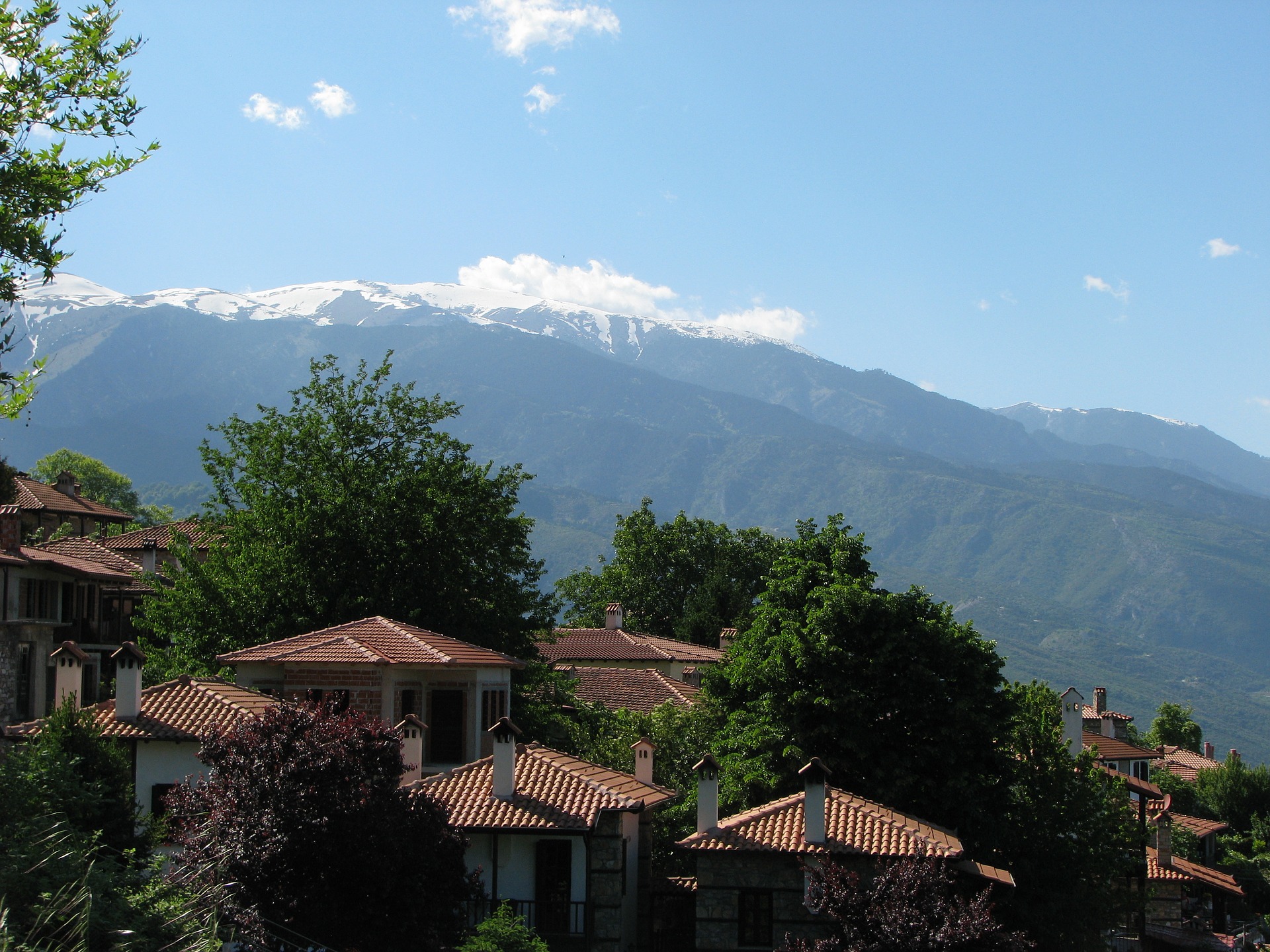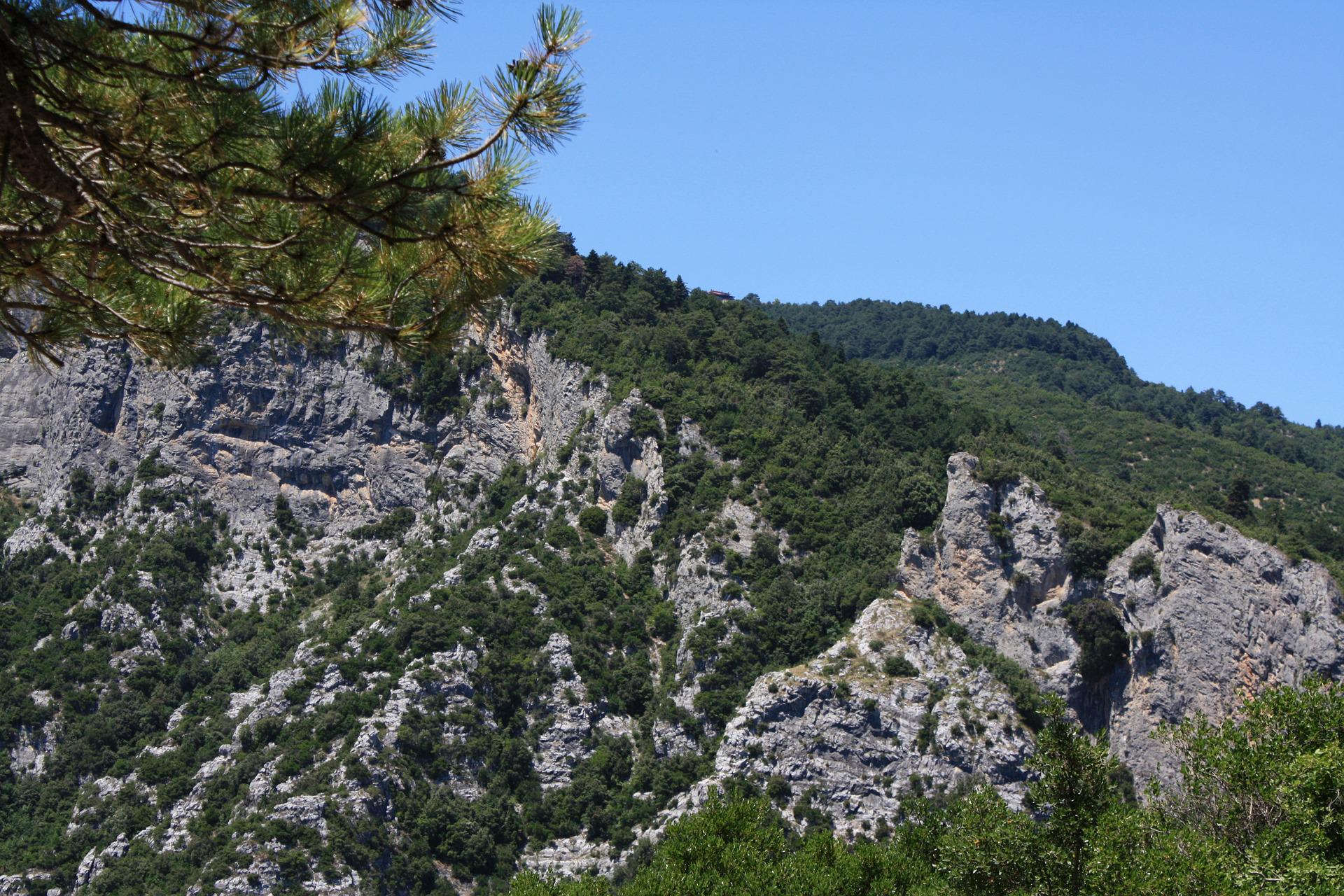Olympic National Park

Olympus
Mount Olympus is the highest mountain massif in Greece,
lying between the northern and central parts of the country, bordered by the
plain of Katerini to the north, with the Gulf of Thermaikos to the east. It
extends over an area of about 500m2. It contains 55 mountain peaks,
and its highest peak is Mitkas, which rises to 2918 m. Other peaks are Skolio
(2911 m), Stefani (2909 m), Skala (2866 m) and Touba (2785 m).

History of climbing
The first man to climb near the summit was Mehmed IV Sultan
of the Ottoman Empire in 1669. The first ascent was made by two Swiss men,
Daniel Baud-Bovy and Frédéric Boissonas, together with the Greek Christos
Kakalos, on August 2, 1913.
Mountaineering exploration of Olympus was also initiated in
the 1920s by Italian and German explorers. The most interesting cliffs were
found to be: the Mitkas wall measuring 500 meters, the Skolio
“galleries" measuring 400 meters, which is almost 1 kilometer long,
and the Stefani wall measuring 300 meters.
For at least four millennia Olympus has been crossed by two
road routes, and since 1909 also by a railroad route. In 2004 two railroad
tunnels were opened on this route, which pierce the mountain massif.
Fauna and Flora
The Mount Olympus massif is recognized as an extremely lush
ecosystem due to its favorable climatic conditions, namely high rainfall and
mild winters. Since 1937, the greater part of the mountain has been included in
the Mount Olympus National Park, so that the flora and fauna in these areas are
even more protected.
There are 32 species of mammals, including roe deer, deer,
wild boar, badgers, wildcats, foxes, wolves and jackals. There are also 108
species of birds, most of which are predators. Another impressive fact is that
there is a huge variety of butterflies.
There are also about 1700 species of plants, the most common
ones being mosses, shrubs, herbs and trees.
Most of the species in the Olympic National Park are not
found in other parts of Greece, which is why Olympus has gained a lot of
interest among scientists from all over the world. It was inscribed on the list
of the greatest treasures of mankind by UNESCO, which declared it an
International Biosphere Reserve in 1981.

Mountain hiking
The best base for ascending the Olympus massif is considered
the town of Litochoro. The town lies at an altitude of 315 meters above sea
level. From there, there are two roads leading to the mountains. The first is
an old mountain path, which initially leads through the picturesque Enipeas
Gorge. After leaving the town, the Mavrolongos Valley begins, with phenomenal
scenic views of vegetation. The second road is the Dikladosi (Gortsia) route,
leading 13 km from the town of Litochoro. This road is located near the Takis
Boundolos “D" shelter, which was built in Stavros. In addition to
these two main routes, there is a third route that leads to the southwestern
part of Mount Olympus. This route is the least used by tourists due to the lack
of huts and the time required to complete the hike.


